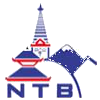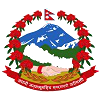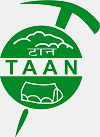Mount Everest Base Camp Trek FAQs
1. How long does the Everest Base Camp trek take?
Most standard itineraries take 12–14 days. We recommend our standard 16 days itineray that includes acclimatization, arrival and return day.
2. What is the best time to do the Everest Base Camp trek?
The best seasons are spring (March–May) and autumn (September–November) due to clear skies and stable weather.
3. How difficult is the trek?
The trek is considered moderate to challenging, mainly due to the altitude. No technical climbing is required.
4. Do I need prior trekking experience?
Not necessarily. Good physical fitness and mental preparation are enough for most people.
5. What is the maximum altitude on the trek?
The highest point is Kala Patthar (5,545m) which offers the best view of Everest.
6. What permits do I need?
You need:
Sagarmatha National Park Permit
Khumbu Pasang Lhamu Rural Municipality Permit
7. Is altitude sickness a concern?
Yes. Proper acclimatization and hydration help reduce the risk. It’s important to ascend gradually. Our standard itinerary includes extra acclimatization/rest day in Namche and Dingboche.
8. Where do we sleep during the trek?
You’ll stay in teahouses/lodges – simple guesthouses with basic. Your guide can book rooms in advance.
9. What kind of food is available on the trail?
Typical meals include dal bhat, pasta, soups, potatoes, rice, vegetables, eggs, and tea/coffee.
10. How do I get to the starting point?
Most treks start with a flight from Kathmandu to Lukla (approx. 35 minutes). Nowadays, we can also drive from kathmandu to Salleri ( 8 hours) and Salleri to Paiyun/Surke (6hours) and on the third day we trek to Namche
11. Is there Wi-Fi or mobile signal on the trek?
Yes, many teahouses offer Wi-Fi (paid) and there is mobile coverage in most villages.
12. Can I charge my devices along the way?
Yes, but electricity may be solar-powered and costs extra. Bring a power bank.
13. Do I need a guide and porter?
It’s optional, but highly recommended for safety, navigation, and support. Some regions now require a licensed guide.
14. What should I pack for the trek?
Essentials include:
a. Warm clothing in layers: a thermal, fleece, few t-shirt, gloves, warm caps and socks
b. Waterproof jacket
c. Hiking boots
d. Sleeping bag
e. Headlamp
f. Trekking poles
g. Reusable water bottle preferably with filter.
15. What is the cost of the Everest Base Camp trek?
Costs vary by package. On average, expect to spend $1,350–$1,800 USD for a guided trek, including permits, meals, and accommodation.
16. Is travel insurance necessary?
Yes. It should cover high-altitude trekking (up to 6,000m) and emergency evacuation.
17. Is drinking water safe?
Bottled water is available but not eco-friendly. Use purification tablets or filters with boiled water.
18. How cold does it get?
Temperatures can drop to -10°C (14°F) or lower at night in higher altitudes, especially in spring and autumn.
19. Can I do the trek solo?
Technically yes, but having a guide adds safety, local insight, and convenience. Solo trekking may be restricted in the future.
20. What happens in an emergency?
There are rescue helicopters available from most villages. Trek insurance should include emergency evacuation. Your gudie is trained to take necessary steps in such conditions.
21. How do I book this trip?
Once your plan is clear, you can book this trip with us by sending us small amount for booking confirmation via bank transfer to our official account. The remaining amount can be paid in cash/card to our representative upon your arrival in kathmandu . At the moment, in Nepal paypal or other international online payment portal are not operating.







